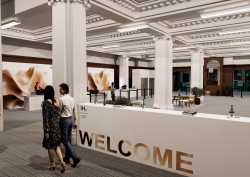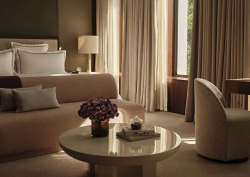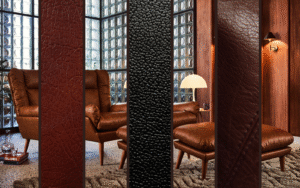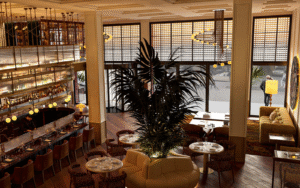Lansdowne Club, the historic members’ club in the heart of Mayfair in London, has unveiled new suites. Hamish Kilburn, Editor of Hotel Designs, caught up with Dale Atkinson, Founder of Rosendale Design, to understand how he sensitively injected a modern personality into this iconic 18th century building…
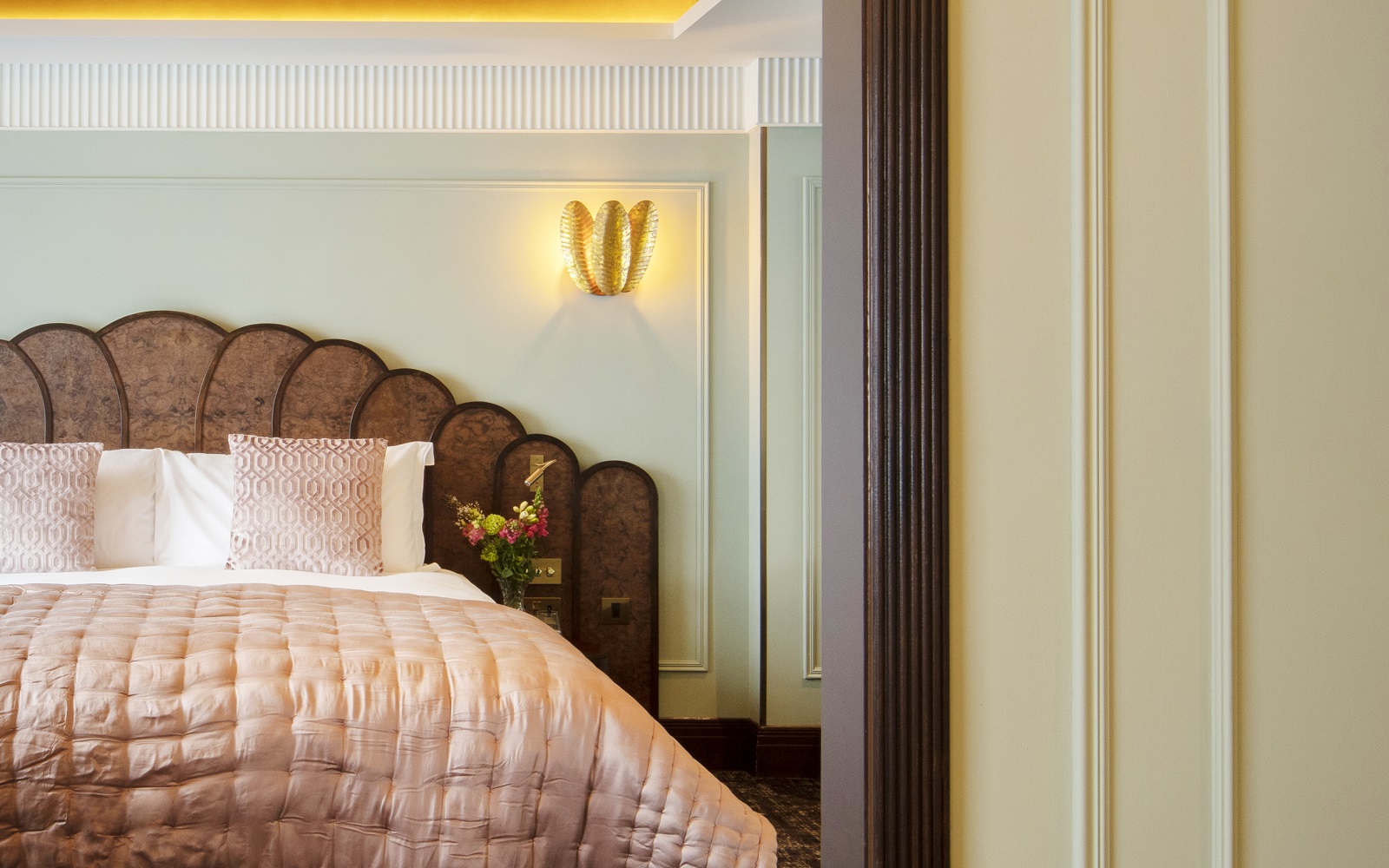
There was arguably no better project for Dale Atkinson, Founder of Rosendale Design, to flex his creative muscles on than Lansdowne Club. The iconic private members’ club in Mayfair, which is sheltered under an architectural shell that dates back to 1763, was in need of a new look to compete against other hospitality hotspots that have emerged on the luxury scene in London in recent years.
Originally built by renowned neoclassical architect Robert Adam, the building itself is a testament to British architectural grandeur – something that the new design uses to capture the heart of London hospitality effortlessly.

Image credit: Lansdowne Club / Rosendale Design
The club itself was established in 1935. With a luxurious interior design scheme, inspired by the Art Deco movement, the club has served as a haven for social and intellectual gatherings, attracting a distinguished membership that includes leaders in business, politics and the arts.
Leading Lansdowne Club, therefore, gracefully into a new design era – a chapter in hospitality history yet to be written – with confidence and prowess is no easy feat. There are few hotel interior designers who have the technical know-how and understand the and emotional effects of lighting and interior design than Atkinson. The lighting designer turned interior designer approached this project sensitively, peeling back the property’s many layers of history to establish the club’s new creative direction.

Image credit: Lansdowne Club / Rosendale Design
The design brief was to refresh the suites with a new interior scheme that felt inviting and modern without loosing the opulence of checking in to Lansdowne Club. “The client wanted us to create an environment that could not be replicated anywhere else in the world,” Rosendale said. “Guests should feel that they could only be at The Lansdowne.”
“There were such a wide array of architectural references to draw upon that these were documented and used as references within the rooms,” explained Atkinson who celebrated the architectural details, which goes as far back as 1763, and the club’s rich history in the new interior design narrative. “For example, the scalloped cornices around the columns in the swimming pool are referenced in the cornices in the rooms themselves, as are the historic grills from the building’s edifice employing Art Deco decorative fans.”
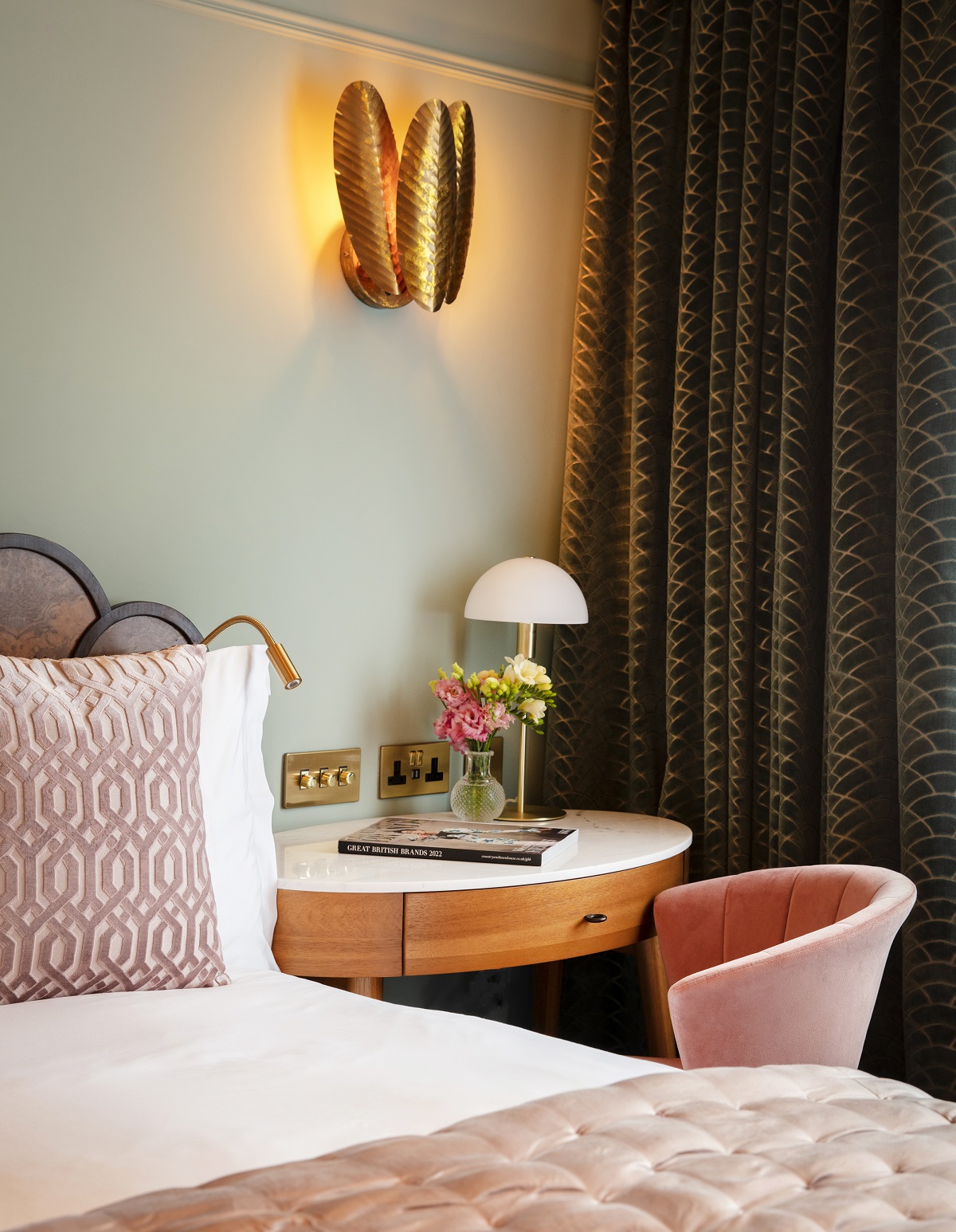
Image credit: Lansdowne Club / Rosendale Design
The colours of the rooms are also derived from the various areas of the club. Most notably, the greens and pinks used to reference the First Drawing Room, which was dismantled and shipped to the Museum of Art, in Philadelphia, USA, where it is on permanent display. “The colours ultimately employed in the rooms are softer than the original colours,” added Atkinson. “This was done as the original colours were originally lit by candle light, and would have been perceived as much duller under these conditions.”
During the project, various timbers were found within the Art Deco areas with in the club, walnut being most notable. The material was used in the design scheme to, again, reference the past whilst being employed in a contemporary manner on the feature scalloped headboards and the reclaimed freestanding wardrobes.
While the overall look and feel is a nod to the building’s heritage – if only walls could talk – Atkinson has injected technology in hidden and clever ways. The headboards, for example, provide modern conveniences, such as built-in reading lights, power sockets, data connections and lighting controls.

Image credit: Lansdowne Club / Rosendale Design
The lighting, including integrated LED lighting that is concealed in the coffer, the central surface mounted light and the Art Deco wall lights, has been designed to be customised to suit the guest’s needs and mood. Considering how light reflects on surfaces as well as illuminates a space, Atkinson designed the lighting to compliment luxury elements, such as the Art-Deco inspired, gold-coffered ceilings, which reference the various gold leaf details found in the older areas of the club.
Reflecting on the project, Atkinson said: “This project is extremely important to me, both personally and professionally as I am a member myself. It has been a labour of love, and the history and architectural significance of the club is second to none.”
Rosendale Design delivered a set of suites that the reference the clubs history through architectural detailing, materiality and colour schemes. When members now stays in the new rooms, they can associate themselves with different aspects of the club, knowing they are in one of the oldest members’ clubs in the country – a quality and detail that no new-build can ever replicate.
Main image credit: Lansdowne Club / Rosendale Design






